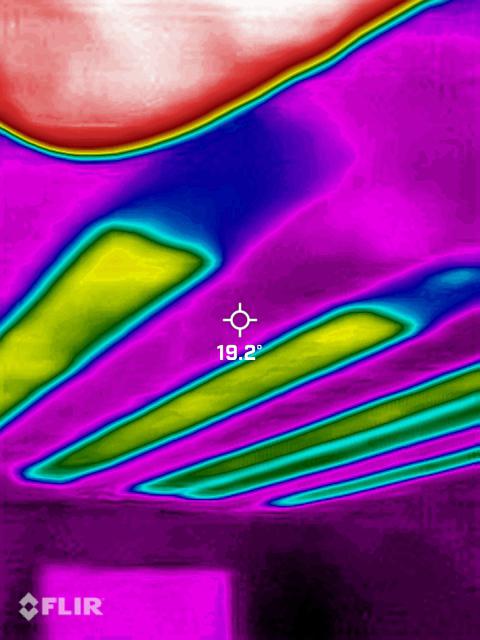As the UK faces more stringent building regulations and increasing impacts of climate change, finding sustainable and efficient ways to maintain comfortable indoor environments is critical. The recent introduction of Part O in the UK Building Regulations emphasises the need to address overheating in buildings.
Heat Cloud’s innovative radiant heating and cooling panels provide a solution that complements passive cooling strategies perfectly, offering an energy-efficient and compliant approach to climate control.
Understanding Passive Cooling
Passive cooling refers to a method of building cooling which does not require the use of an active air conditioning chiller or reverse cycle heat pump to generate a supply of chilled water. A ground source heat pump installation is required with the potential to operate in passive mode. In passive mode, the heat pump is effectively switched off and the only power input is to drive the circulating pumps which move the chilled water through the pipes.
In passive mode, the chilled water circulating in the loop is directly cooled by the ground which is at an almost constant year-round temperature (around 10°C). Chilled water can then be generated and circulated at temperatures a few degrees above the temperature of the ground.
How Heat Cloud Integrates with Passive Cooling
Heat Cloud panels are radiant heating/cooling panels which are required to operate, in cooling mode, above the dewpoint of the air to ensure condensation is not formed on the panel surfaces. To ensure this they are fed with chilled water at elevated temperature, typically 14°C and above.
This elevated temperature chilled water is exactly that which is available from passive cooling systems and when integrated allows the realisation of all the energy savings associated with passive rather than active operation.
In heating mode, the panels only require a supply of low grade hot water as would be available from a heat pump operating close to its maximum efficiency.
Radiant Cooling Efficiency
Cooling spaces radiantly has benefits in terms of both comfort and energy efficiency. As the room surfaces are cooler than with convective cooling systems, it is possible to maintain a higher space temperature while still experiencing the same level of comfort. Higher space temperatures will result in a reduction in the level of ventilation heat gains.
The radiant panels cover a significant proportion of the ceiling and generate a cooling effect felt equally throughout the space. Chilled water is pumped through the panels and this water absorbs heat from the space; in passive systems, the warmed water exchanges heat, via a heat exchanger, with the water being pumped through the ground loop and the heat pump does not need to function.
Part O Compliance
Part O requires that steps be taken to prevent homes from overheating in summertime. It specifically prescribes that overheating be prevented using passive means wherever possible and that active air conditioning should only be used in instances where passive measures either cannot be used or are unable to offset the heat gains at the necessary rate.
The passive measures prescribed in Part O, refer to the opening of windows and the use of crossflow ventilation but there are many applications whereby windows cannot be opened due to noise, pollution or security issues and these are applications where active conditioning would normally be required. The use of passive cooling from a ground source heat pump and Heat Cloud radiant panels increases the range of applications which can be prevented from overheating passively.
The Future of Building Design with Heat Cloud
The combination of passive cooling and Heat Cloud’s radiant panels represents a forward-thinking approach to climate control. As the demand for energy-efficient and environmentally responsible solutions grows, our technology offers a practical and sustainable way to maintain comfortable indoor environments.
By adopting Heat Cloud’s system in conjunction with passive cooling strategies, buildings can achieve a balanced climate that is both efficient and environmentally friendly, contributing to the overall reduction of carbon footprints.
Learn More
Discover how Heat Cloud is improving the future of climate control. Together, we can help create a cooler, greener future. Contact us today!
Call us on 07831788069 or email us at steve@kiteassociates.co.uk.

